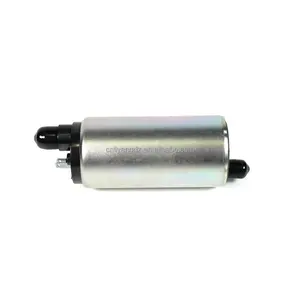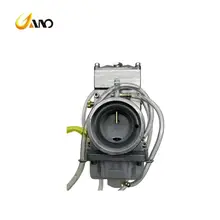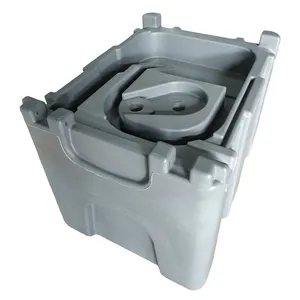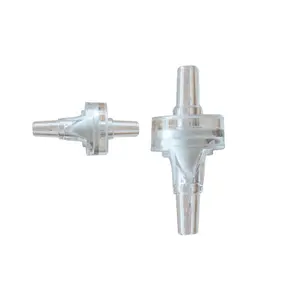Introduction
Fuel petcocks, the unsung heroes of your motorcycle's fuel system, are essential for controlling the flow of fuel to your engine. They come in various types, each with its unique features and functions. This guide will delve into the world of fuel petcocks, exploring their basics, types, and the roles they play in your ride. We'll also discuss how to choose the right one for your motorcycle, how to install and maintain them, and how to troubleshoot common issues. Ultimately, we'll show you how a well-maintained fuel petcock can revolutionize your ride, enhancing both performance and efficiency.
Understanding Fuel Petcocks: Basics and Functions
A fuel petcock is a small shut-off valve used to control the flow of liquid or gas. Historically, petcocks were threaded valves controlled by a butterfly handle, but modern petcocks are typically ball valves. Compared to the progressive control of a gate valve, a ball valve style petcock's control is coarse, confining their use mainly to on-off applications. They are commonly found in motorcycles, automobiles, heavy equipment, and marine engines, serving various functions such as fuel supply control, radiator drain, and combustion verification.
Types of Fuel Petcocks
Fuel petcocks are an integral part of your motorcycle's gas tank. You'll usually find one of the following types of petcocks on your motorcycle’s gas tank. Many petcocks have built-in filters that prevent particles from reaching the carbs. You can also add an inline filter to your fuel line. If your motorcycle’s fuel petcock is not working – either fuel won’t flow or won’t stop flowing – you’ll need to repair or replace it. You can often purchase a new or used working petcock and replace it entirely, or you can purchase repair parts.
Manual Petcocks
A manual petcock is a simple 2-way or 3-way valve that controls fuel flow from the tank. Its positions are typically 'on', 'off', and 'reserve'. It's crucial to develop a habit of turning the petcock to 'off' every time you shut off the engine. Manual petcocks are straightforward and rarely cause trouble. Regular use is beneficial as it keeps the internal parts free and pliable. However, the internal rubber components do eventually wear and deteriorate, often causing noticeable external leaks that must be addressed for safety.
Vacuum Operated Petcocks
Vacuum operated petcocks, like the OEM petcock on certain bikes, use engine vacuum to control fuel flow. They have three positions: ON, RES, and PRI. In the ON and RES positions, fuel flows only when the engine is running. The PRI position allows continuous fuel flow, typically used to prime the carb float bowl after removal. However, these petcocks can fail, either by not shutting off fuel flow when the bike is off, flooding the engine, or not allowing fuel to flow in ON or RES. Despite these issues, many riders find the convenience of not having to remember to shut off the fuel appealing.
Electric Petcocks
Electric petcocks are powered by a 12V DC supply, similar to most vehicle batteries. They remain closed until power is applied and hold open until power is removed. These petcocks are fitted with a DC coil that requires DC power to function. The coil is rated for a 100% duty cycle but not indefinitely. They have no polarity, simplifying installation. Electric petcocks are suitable for a wide range of fluids and can operate at temperatures from 15°F up to 250F. They can handle up to 115 PSI and have no minimum pressure requirements, making them a great choice for gravity-fed systems.
How to Choose the Right Fuel Petcock for Your Ride
Choosing the right fuel petcock for your ride involves understanding the different series of valves available. The 1000 Series valve is ideal if the valve is mounted on the left side with the hose outlet facing forward, or on the right side with the hose outlet facing rearward. The 4000 Series valve is suitable for the opposite configuration. For a more flexible option, the 6000 Series valve is a universal configuration that can be used in almost any tank location, allowing the hose barb to point in any direction that leaves the on/res/off lever accessible.
Installation and Maintenance of Fuel Petcocks
The installation and maintenance of fuel petcocks involve several steps. Initially, drain the fuel tank and remove the old petcock. Use a box wrench and pliers to unscrew the 'gunk collector' and remove the inner screen and o-ring. Install the new petcock by reversing the removal process. Ensure to run some fuel through the new valve to test it. Once confirmed there are no leaks or clogs, re-install the tank on the motorcycle and reconnect the fuel lines to the outputs on the new petcock. Regular maintenance can prevent issues like clogs and leaks.
Troubleshooting Common Fuel Petcock Issues
Fuel petcocks can fail in two ways. First, they can fail to stop fuel flow to the carburetor, leading to engine flooding. Second, the diaphragm in the petcock can fail, allowing fuel to flow into the vacuum line and again, flooding the engine. A common solution to these issues is to install a manual petcock, which requires the operator to switch the fuel off every time they leave the bike. However, it's important to note that the installation of a manual petcock requires blocking the vacuum line from the carburetor.
Revolutionizing Your Ride: Performance and Efficiency Improvements
Fuel petcocks play a crucial role in your motorcycle's performance and efficiency. Manual petcocks, for instance, are simple and rarely cause trouble. Regular use keeps their internal parts free and pliable, enhancing their longevity. Vacuum petcocks, on the other hand, should be tested periodically to ensure their diaphragms are intact and functioning as designed. Some riders prefer high-quality manual petcocks for their reliability. Remember, using the 'reserve' setting periodically can prevent water layering at the bottom of the tank, improving fuel efficiency. In essence, a well-maintained fuel petcock can revolutionize your ride, providing both performance and efficiency improvements.
Conclusion
In conclusion, fuel petcocks are a vital component of your motorcycle's fuel system. Understanding their types, functions, and maintenance requirements can significantly enhance your ride's performance and efficiency. Whether you prefer the simplicity of manual petcocks, the convenience of vacuum-operated ones, or the advanced features of electric petcocks, the key lies in regular maintenance and timely troubleshooting. By choosing the right petcock for your ride and keeping it in top shape, you can ensure a smooth, efficient, and trouble-free journey. Remember, a well-maintained fuel petcock doesn't just control your fuel—it revolutionizes your ride.











































 浙公网安备 33010002000092号
浙公网安备 33010002000092号 浙B2-20120091-4
浙B2-20120091-4